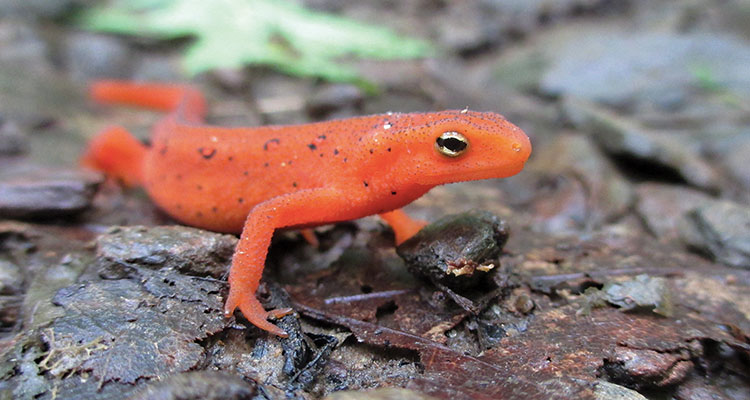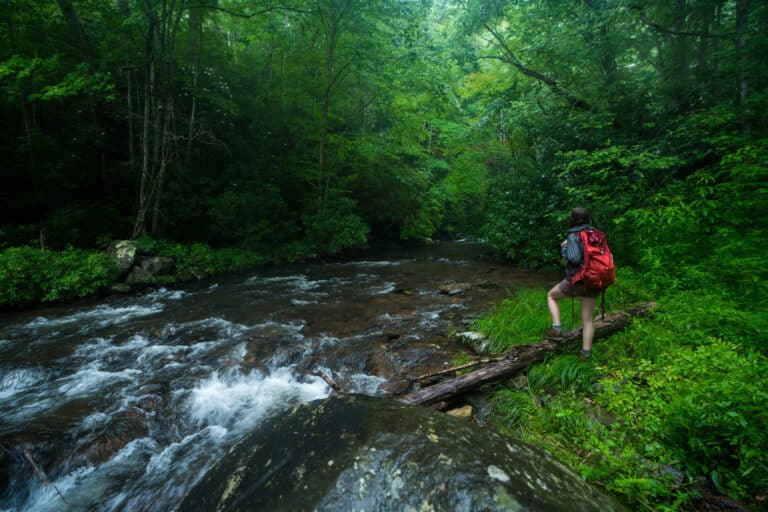The Southeast is home to black bears, the last red wolves, endangered sea turtles, elk, eagles, and even a few mountain lions. Although the Eastern cougar has been officially declared extinct, cougars from the West have made their way East. At least nine cougar sightings have been confirmed in Tennessee in the last two years.
But the symbol of Southern Appalachia is the salamander. Our mountains shelter more species of salamanders than anywhere else in the world. We have inch-long pygmy salamanders and two-foot hellbenders. Salamanders here are red-cheeked, red-backed, red-legged, black-bellied, long-tailed, slimy, zig-zag, marbled, spotted, shovel-nosed, and four-toed. Some are found on a few Appalachian summits and nowhere else on earth.
Unfortunately, managers of Southern Appalachian forests rarely focus on salamanders—or any other non-game species. When the U.S. Forest Service and state agencies talk about wildlife, they usually focus the conversation on game species like white-tailed deer, turkey, or ruffed grouse. These agencies sometimes have wildlife in their name, but they tend to be primarily focused on serving the interests of hunters.
The North Carolina Wildlife Resources Commission, for example, is actively campaigning to remove protections for the endangered red wolf. It has also lobbied against land protections—including recreation areas and scenic areas—in Pisgah National Forest.
These agencies also believe we need to increase the amount of timber harvested to provide additional habitat for game. The obvious scientific truth is this: we already have an abundance of deer and deer habitat across the region. There are over one million deer in North Carolina, and their numbers are trending upward, according to the N.C. Wildlife Resources Commission’s own analysis. Deer are certainly not endangered, nor are they unique to Appalachia. And their habitat needs shouldn’t be the primary focus of management on public lands.
Let me be clear: I don’t oppose creating patches of additional habitat for deer, turkey, and grouse in appropriate places to accommodate hunters. There is plenty of space on our public lands for both game and non-game wildlife. But the term wildlife has to be an inclusive term that considers the other 99 percent of species that depend on our public lands.
Let’s restore the full meaning of the word wildlife to public lands agencies. Let’s make sure they manage our public lands for all wildlife and not just game. Wildlife is not just a few species that we like to hunt. Wildlife is a web of thousands of species that are sheltered by Southern Appalachia: cougars and chorus frogs, bobcats and bog turtles, flying squirrels and saw-whet owls—and especially salamanders.

-Will Harlan, Editor-in-Chief








